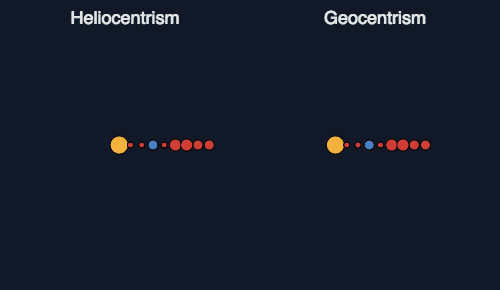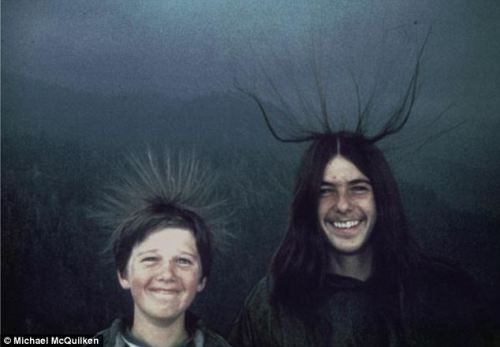How To Get Out Stains Using Other Things

How to get out stains using other things
More Posts from Fibonaccite and Others

The difference between an easy model and a complicated one.
Heliocentrism and geocentrism

The VLT Survey Telescope at ESOs Paranal Observatory in Chile has captured this richly detailed new image of the Lagoon Nebula
js

Question: If 2 black holes get near each other, can they then gravitationally pull matter out of the other black hole & back into “normal” space?
The short answer is no.
A black hole (in the traditional sense) is defined as an object that has collapsed so that its radius is equal to, or less than, the Schwarzschild of the object.
What does this mean?
Every object has a Schwarzschild radius; this is the point at which an object’s mass is so compressed that the gravitational influence overpowers the other forces of nature and it collapses to a singularity.
Of course, not every object is massive enough to collapse to its Schwarzschild radius. The Earth’s Schwarzschild radius, for example, is about the diameter of a small marble. If you were to apply enough energy to the Earth and compress its mass to that size, it would collapse to form a black hole. The same is true for humans, except I’d need to compress you to a point some 10-million times smaller than a marble in order to turn you into a black hole.
So, what is special about the Schwarzschild radius? This is the point at which the escape velocity for the object is equal to the speed of light. Obviously, since you can’t travel ,or faster than, the speed of light you can’t get out of a black hole neither can another black hole pull you out.
It’s important to realize that, outside of the Schwarzschild radius (also known as the event horizon), spacetime is normal. You can interact with a black hole in the same ways you interact with any other object of mass.
Image credit: NASA/CXC/A.Hobart
Article: From Quarks to Quasars


Hedyphane
Varying from white to yellowish with occasional reddish or green specimens, it was named after its discovery in Sweden in 1830 from the Greek words for ‘appearing beautiful’. It is a rare critter, only forming in manganese or zinc ore deposits that have been metamorphosed by heat and pressure deep within the crust, or when intruding granites bake the surrounding rock. It is a part of the apatite group (see http://bit.ly/2akYWkg)and includes lead and calcium combined with arsenic and oxygen in its composition, being an analogue of another pretty mineral called mimetite (see http://on.fb.me/1zo1vvI).
Keep reading
-
 pizzalethal reblogged this · 2 weeks ago
pizzalethal reblogged this · 2 weeks ago -
 noeticbarbarian liked this · 3 weeks ago
noeticbarbarian liked this · 3 weeks ago -
 valleypov liked this · 4 weeks ago
valleypov liked this · 4 weeks ago -
 deadlybreakfast liked this · 1 month ago
deadlybreakfast liked this · 1 month ago -
 alicesfallintodreamland liked this · 1 month ago
alicesfallintodreamland liked this · 1 month ago -
 sexcsatanic liked this · 1 month ago
sexcsatanic liked this · 1 month ago -
 its-more-than-just-a-fantasy liked this · 2 months ago
its-more-than-just-a-fantasy liked this · 2 months ago -
 bamrightinthesoul reblogged this · 2 months ago
bamrightinthesoul reblogged this · 2 months ago -
 chronos12366 liked this · 2 months ago
chronos12366 liked this · 2 months ago -
 sharedrm reblogged this · 2 months ago
sharedrm reblogged this · 2 months ago -
 darkkangeel liked this · 2 months ago
darkkangeel liked this · 2 months ago -
 trippy-xylophone reblogged this · 2 months ago
trippy-xylophone reblogged this · 2 months ago -
 criesbc1d reblogged this · 3 months ago
criesbc1d reblogged this · 3 months ago -
 sleepydreameroncloud9 reblogged this · 3 months ago
sleepydreameroncloud9 reblogged this · 3 months ago -
 xswyaq1 liked this · 3 months ago
xswyaq1 liked this · 3 months ago -
 starppleb liked this · 3 months ago
starppleb liked this · 3 months ago -
 scaehime reblogged this · 3 months ago
scaehime reblogged this · 3 months ago -
 irrepressible-domovoy reblogged this · 3 months ago
irrepressible-domovoy reblogged this · 3 months ago -
 brainddump reblogged this · 4 months ago
brainddump reblogged this · 4 months ago -
 seamarsol liked this · 4 months ago
seamarsol liked this · 4 months ago -
 magosmerp liked this · 4 months ago
magosmerp liked this · 4 months ago -
 trouble-warning liked this · 4 months ago
trouble-warning liked this · 4 months ago -
 theresoneicouldcallking liked this · 4 months ago
theresoneicouldcallking liked this · 4 months ago -
 5tr4n93r-th1n95 liked this · 5 months ago
5tr4n93r-th1n95 liked this · 5 months ago -
 i-darkling liked this · 5 months ago
i-darkling liked this · 5 months ago -
 annahpmn8 liked this · 6 months ago
annahpmn8 liked this · 6 months ago -
 annita89z038o4h liked this · 6 months ago
annita89z038o4h liked this · 6 months ago -
 annattyer liked this · 6 months ago
annattyer liked this · 6 months ago -
 anna6bmeg liked this · 6 months ago
anna6bmeg liked this · 6 months ago -
 annaxpdoa liked this · 6 months ago
annaxpdoa liked this · 6 months ago -
 annita89nkd59vm0h liked this · 6 months ago
annita89nkd59vm0h liked this · 6 months ago -
 annita893e7cjr47h liked this · 6 months ago
annita893e7cjr47h liked this · 6 months ago -
 annita8911zkjzh liked this · 6 months ago
annita8911zkjzh liked this · 6 months ago -
 impishmarket liked this · 6 months ago
impishmarket liked this · 6 months ago -
 sffire liked this · 6 months ago
sffire liked this · 6 months ago -
 poshtotties liked this · 6 months ago
poshtotties liked this · 6 months ago -
 bluesivad liked this · 6 months ago
bluesivad liked this · 6 months ago -
 deepestpinetree liked this · 6 months ago
deepestpinetree liked this · 6 months ago -
 oxfordsonnets reblogged this · 6 months ago
oxfordsonnets reblogged this · 6 months ago -
 beesinacoat liked this · 6 months ago
beesinacoat liked this · 6 months ago -
 lotus-library reblogged this · 7 months ago
lotus-library reblogged this · 7 months ago -
 thatrandofangirl reblogged this · 7 months ago
thatrandofangirl reblogged this · 7 months ago

![[source]](https://64.media.tumblr.com/f9ccf6b59a66ead3faa1b964992f18f0/tumblr_o6cw978FtM1vs0pdho1_500.jpg)







